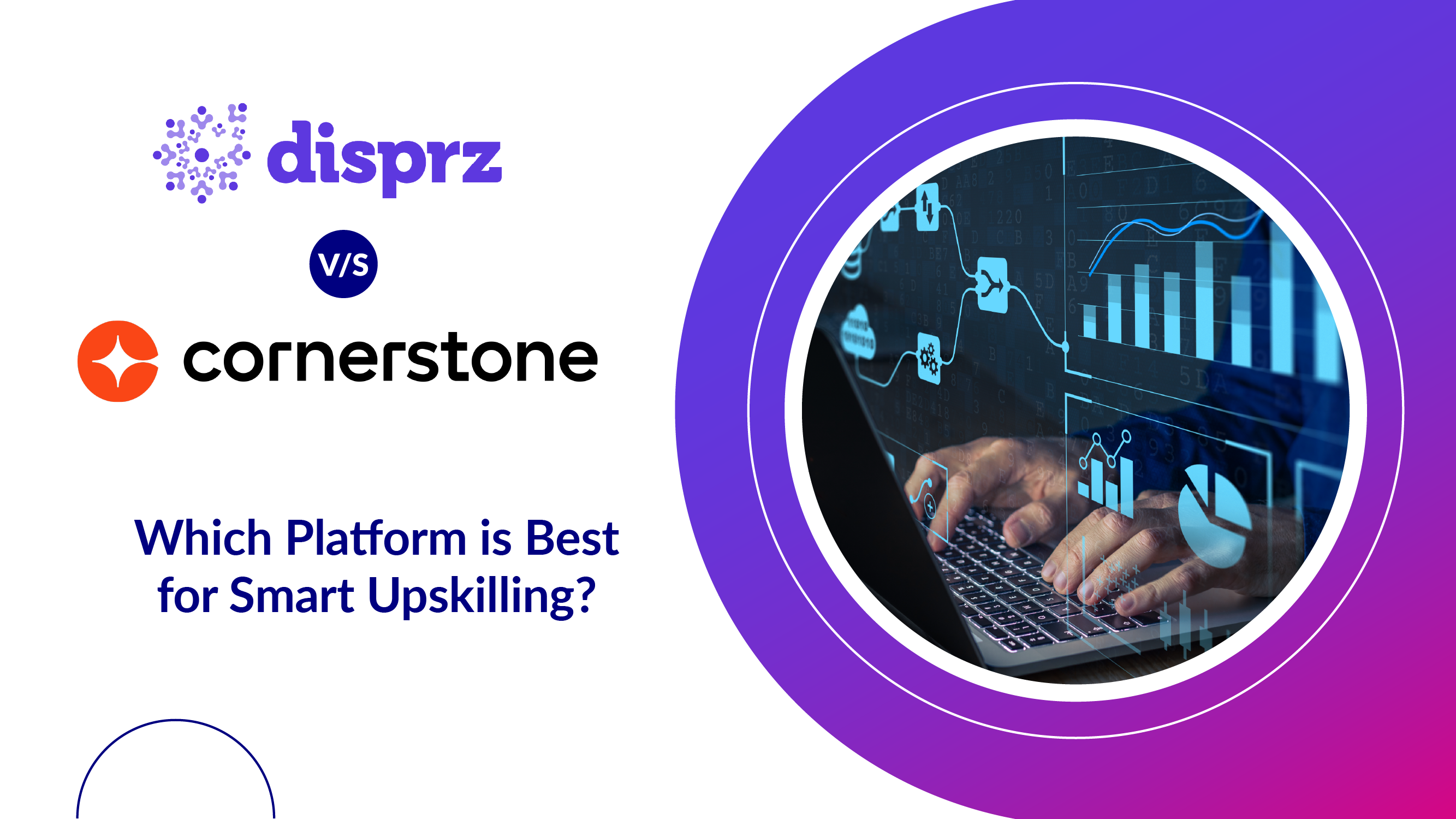The food and beverage (F&B) industry is the biggest pillar of the hospitality sector. According to a recent report from Plunkett Research, the global F&B industry was valued at a whopping $8.1 trillion worldwide! And the total number of people employed in this industry could range in the higher millions – more than the population of many countries! Most countries apportion a substantial chunk of their GDP to education, so you must be thinking that this must be the case for this industry as well. Alas, that’s where the good news ends.
Only 52% of workers employed in the F&B industry reportedly receive training when they join their organizations – that too only onboarding training, and no skill-related training is provided after that! An industry of this size cannot thrive on such dismal performance. Providing F&B industry employees with more training opportunities is surely the need of the hour.
But training for the sake of training is not what is needed here. The training needs to not just exist, but also engage. Having a training program that isn’t relevant or is unengaging is the same as having no training at all.
What is Food and Beverage Service Training?
Many countries require individuals to possess responsible service certifications as part of their food and beverage (F&B) service training. When your staff can expertly discuss and recommend pairings of desserts and beverages, it often results in increased sales and improved customer experiences.
Equipping service teams with comprehensive product knowledge enables them to provide outstanding service, strengthening customer relationships. Establishing a solid foundation allows your team to transition from transactional interactions to relational service, which greatly enhances customer satisfaction.
In relational service, team members utilize emotional intelligence, observe situations, ask relevant questions, and treat guests as individuals. This personalized method enriches the overall dining experience. Investing in food and beverage service training not only prepares your staff to confidently promote your menu but also nurtures genuine enthusiasm among them.
How Does Training for the F&B Industry Increase Profit?
F&B staff training and development are vital to both employee growth and organizational success in the food and beverage industry. By equipping staff with the skills and knowledge needed to deliver exceptional service, effective training enhances customer satisfaction and strengthens the establishment's reputation. Ultimately, investing in F&B employee development is essential for long-term success.
Enhance Customer Service Excellence
Exceptional customer service is crucial for business success. Training employees in service etiquette and menu knowledge prepares them to provide outstanding service, boosting customer satisfaction and loyalty.
Increase Employee Confidence and Job Satisfaction
Effective training empowers employees by equipping them with essential skills, leading to greater job satisfaction. A confident workforce is more motivated and engaged, positively impacting productivity and overall business success.
Boost Profitability
Delivering top-notch food and beverage service is essential for an organization's financial success. Training staff in upselling, personalized recommendations, and crafting memorable dining experiences can lead to significant sales growth while reducing errors and waste lowering costs, and enhancing profits.
Promote Customer Satisfaction
Training in food and beverage service equips staff to create an exceptional dining atmosphere for patrons. With effective instruction, employees can make insightful recommendations, accurately address inquiries, and anticipate customer needs, resulting in greater satisfaction, repeat visits, and positive referrals.
Maintain Regulatory Compliance
The food and beverage sector faces strict regulations concerning health and safety practices. Training employees on legal requirements helps organizations adhere to local, state, and federal guidelines, preventing penalties, fines, and adverse publicity.
Benefits of Training Employees in F&B Industry
Here are the benefits of employee training specifically for the food and beverage industry:
Enhanced Customer Service
Training employees in customer interaction skills leads to better service and ensures that guests have a positive experience. The benefits of employee training in this area result in confident staff who can effectively address customer inquiries and concerns.
Improved Food Safety and Compliance
Regular training on food safety standards ensures employees understand proper food handling practices. This minimizes the risk of foodborne illnesses and helps meet health regulations.
Increased Efficiency and Productivity
Training equips employees with the skills needed to perform tasks efficiently. This results in faster service and smoother operations, ultimately enhancing overall productivity.
Higher Employee Retention
Offering training opportunities signals a commitment to employee growth, increasing job satisfaction. This leads to lower turnover rates, reducing hiring and onboarding costs.
Consistency in Quality and Standards
Standardized training ensures all employees adhere to the company's quality and service standards. This consistency strengthens the brand’s reputation and fosters customer loyalty.
Skill Development and Career Advancement
Training provides employees with opportunities to develop new skills that can lead to promotions. This investment in growth supports career advancement within the organization.
Adaptability to Industry Trends
Continuous training keeps employees informed about the latest industry trends and best practices. This adaptability enables businesses to stay competitive in a rapidly evolving market.
Stronger Team Collaboration
Training fosters teamwork and collaboration among employees, enhancing communication. This creates a supportive work environment where staff can effectively work together.
What makes Training Content Engaging in the First Place?
Let us first see what makes any training content engaging.
1) Relevance
Human beings are inherently self-centered, which makes them disinterested in anything that isn’t tailored for them specifically.
F&B employees take up a variety of roles – from kitchen duty to service. To engage your learners, you need to make it relevant for them – making it specific for the work they are supposed to be doing.
Some might feel that employees should know about the industry as a whole. While that would be great to get an idea about how a restaurant’s supply chain works, in-depth training about different roles would just risk alienating the learner.
2) Goal-driven
A necessary condition for learning is the presence of strong learning goals. If your learner doesn’t know what the learning is set out to achieve – or if they don’t identify with it – they won’t spare their time and attention.
Throughout the training, your learner must know exactly how this will help them. This not only ensures they remain invested in the program but also gives you, the learning designer, clarity about what you need to focus on.
Many F&B employees reportedly wanted training that would help them move up the ladder. If they know the training they are receiving would help them acquire skills that would help with this, they are much more likely to invest themselves in the program.
For example, a chef-de-partie would give a lot more of their time to the training if they knew this gives them the necessary skills to become a head chef.
3) Emulating real-life scenarios
We learn from our mistakes. Any skill that we’re trying to develop derives from the knowledge of what mistakes can potentially be made and avoiding them; like how we learned to ride a bicycle in our childhood.
To bring this to your training, imagine this: Food safety is something all restaurant employees should be mindful of, yet the kitchen staff can cause more damage than those in the service area. So, the training designed for the kitchen staff should have a higher focus on the details of handling food properly while cooking. Similarly, the service staff is the face of a restaurant for the patron. Naturally, a training program for the service staff should focus more on customer service, in comparison to that for the kitchen staff.
4) Crisp
Excessive use of technology and social media has drastically reduced our attention span. This means that training content cannot be too long. It wouldn’t matter how many hours a person spends in front of eLearning modules if their attention is elsewhere.
Besides, F&B employees often don’t have much time. You must grab their attention in the middle of their hectic schedule. In such circumstances, ensuring your training is crisp and not too long isn’t just a desire, but a necessity!
Harness the Power of Microlearning for Efficient Training
Microlearning provides an efficient approach by concentrating on individual concepts through multisensory and diverse methods within a short duration. This strategy utilizes concise video modules featuring captivating imagery and hands-on examples to effectively convey F&B employee training.
Given that younger staff are common in the food and beverage sector, a mobile-centric, video-based approach matches their evolving learning preferences. Microlearning is highly adaptable, making it compatible with various F&B employee training platforms and tools such as Microsoft Teams, Trello, Slack, or messaging services like SMS and WhatsApp. This flexibility supports dynamic and engaging training sessions, creating open communication channels for feedback and inquiries. The method fosters an interactive and responsive learning environment, ensuring that employees have easy access to resources and the opportunity to seek clarification, thereby enhancing their training experience.
Embrace Digital Transformation in Food & Beverage
The food and beverage service training sector is experiencing a major shift as digital transformation reshapes the industry, creating opportunities for enhanced efficiency and superior performance. By integrating cutting-edge technology, food and beverage producers can drive revenue growth, optimize product quality, improve operational agility, and reduce costs. This might include using mobile devices for task management, implementing computerized maintenance management systems (CMMS) and enterprise asset management (EAM) software, or incorporating virtual reality (VR) headsets for remote support and troubleshooting.
While there are hurdles, such as the financial investment required and the speed of deployment, addressing internal resistance to adopting these new technologies is essential. Embracing these changes is key to staying competitive and adapting to market demands in the evolving digital landscape. Organizations that successfully navigate these challenges will position themselves for long-term success and industry leadership in the digital era.
How to Achieve This Task?
Before you design the training, map the requisite competencies. The good news is, you don’t need to create it afresh. Numerous competency maps are already available that you can build upon. Note that these are general maps so you would need to adapt it in the context of your organization.
Once you have identified this, interview and observe the staff to obtain a glimpse of their work. It might also be a good idea to observe them while they are performing their duties, if possible, to understand the different points at which they end up making mistakes. For example, a mistake young chefs often end up making is putting knives in the dishwasher. Seems like a natural thing to do, but the harsh detergent dulls the blade.
Craft your training scenarios to include some of the key areas where the employees would make these mistakes. Giving them a chance to make these mistakes in the safety of your training and providing relevant feedback at the point where they make this mistake is a great way of ensuring the key takeaways are retained.
F&B employees, like others, expect structured training programs to help boost their careers. Providing a certificate at the end of the successful completion helps towards this cause. It also motivates them and brings psychological closure to the whole process.
Ensuring Retention
Training is one thing, but ensuring the learning is retained is another challenge. To ensure retention, F&B teams need to be given periodic refresher training – once every six months is generally preferred.
But sometimes six months can also be a very long time. Provide your learners with just-in-time tools to help them perform better. For process-oriented tasks, handy checklists can help ensure no step gets missed out. For more in-depth takeaways, consider creating ready reckoners and quick reference guides.
Have clearly documented protocol cheat sheets for them to follow. For example, what to do in the event of a customer complaint or fire or municipality inspection, etc., needs to be clearly drawn up and posted at strategic places in the workplace.
Choosing between Classroom and E-learning
It’s not an ideological battle, so it’s not about choosing a side. For F&B, you may need to use both. But for each modality, there are a few things that you can do to make it better for your employees.
Studies show that employee engagement is much higher when their manager is taking a face-to-face session with them, as opposed to an outside trainer. Another good idea is to mix and match your classroom training cohorts. This serves two purposes. First, restaurants need all services running. It may not be possible to have a cohort that comprises all the available bartenders. Secondly, by interacting with colleagues working on different services, your learners would get a good idea of their colleagues’ work and understand the big picture better. Social learning is an important part of any good training program.
But in a classroom training session, it is hard to replicate many of the situations your learners would find themselves in. Using a simulated environment, you can create a life-like replica of the different situations your learners would find themselves in. This makes it much easier for you to create the right scenarios. On the flip side, we need to ensure that eLearning doesn’t go on and on. Our general ability to stay engaged in an online method is less than in a classroom session, especially since there is going to be no trainer to jolt some energy into the room when required!
Keep your eLearning crisp. F&B employees, especially, have hectic days and may not be able to find time at a stretch to go through the entire training at once and might have to take it in installments. Use efficient bookmarking solutions and give your learners the option to resume from where they’ve left off.
Finding the right balance between classroom and eLearning is a key step in creating engaging training content for F&B employees. One way to get the best of both worlds is to use live virtual training platforms where employees can join from their locations – this gives you the rigour of an instructor (albeit virtual) and the cost-effectiveness of eLearning.
Summing it up..
For learning designers, the F&B industry can be hard to understand due to its vast and complex nature. But as with any other vast industry, the key to creating engaging good training content is making it learner-centric. The industry is waiting for a training revolution to happen and the road surely promises to be an exciting one.










